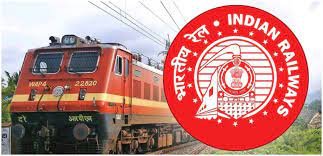
INTRODUCTION
Railway Examination offer a gateway to a rewarding career within one of the largest and most prestigious sectors in numerous countries. These exams are designed to assess the capabilities and readiness of aspirants aiming to embark on a career path that not only promises job security but also a chance to contribute to the nation’s infrastructure and economic development. Preparing for these examinations demands a comprehensive understanding of the selection process, syllabus, and the dedication to surpass the competition. This guide aims to equip candidates with essential insights, strategies, and tips to navigate through the Railway Examination successfully.
TYPES OF RAILWAY EXAMINATION
The Indian Railways conducts a variety of examinations to cater to different job profiles and qualifications. Some of the popular types of railway examinations include:
Railway Recruitment Board Non-Technical Popular Categories (RRB NTPC)
The RRB NTPC examination is conducted to recruit candidates for non-technical positions such as Commercial Apprentice, Traffic Apprentice, Goods Guard, Station Master, etc. This examination consists of multiple stages, including a computer-based test (CBT), skill test, and document verification.
Railway Recruitment Board Group D
The RRB Group D examination is conducted to fill various posts in Level 1 of the 7th Central Pay Commission (CPC) pay matrix. These include positions like Track Maintainer Grade-IV, Helper/Assistant in various technical departments, Assistant Pointsman, etc. The examination consists of a computer-based test, followed by a physical efficiency test (PET) and document verification.
Railway Recruitment Board Junior Engineer (RRB JE)
The RRB JE examination is conducted to recruit candidates for the posts of Junior Engineer, Depot Material Superintendent, and Chemical & Metallurgical Assistant. This examination consists of a computer-based test (CBT), followed by document verification and medical examination.
Railway Recruitment Board Assistant Loco Pilot (RRB ALP)
The RRB ALP examination is conducted to select candidates for the position of Assistant Loco Pilot in Indian Railways. This examination consists of multiple stages, including a computer-based test (CBT), followed by a computer-based aptitude test (CBAT), document verification, and medical examination.
Railway Protection Force (RPF) Examinations
The RPF examinations are conducted to recruit candidates for various positions in the Railway Protection Force, including Constable and Sub-Inspector. These examinations consist of a computer-based test (CBT), physical efficiency test (PET), physical measurement test (PMT), document verification, and medical examination.

PATTERN FOR RAILWAY EXAMINATION
The pattern of railway examinations may vary depending on the type of examination. However, most of the examinations follow a similar structure:
Computer-Based Test (CBT)
The CBT is the initial stage of most railway examinations. It consists of multiple-choice questions (MCQs) based on subjects like General Awareness, Mathematics, General Intelligence and Reasoning, and General Science. The number of questions, marks, and duration may vary for different examinations.
Skill Test
Some railway examinations, such as RRB NTPC, may have a skill test as part of the selection process. This test evaluates a candidate’s proficiency in a specific skill required for the job, such as typing, stenography, or data entry.
Physical Efficiency Test (PET)
The PET is conducted to assess a candidate’s physical fitness and endurance. It typically includes tasks like running, lifting weights, and other physical activities. The requirements for the PET may vary depending on the job profile and gender.
Document Verification
After clearing the above stages, candidates are required to undergo document verification. This process involves verifying the authenticity of the candidate’s educational qualifications, age, caste/category, and other relevant documents.
Medical Examination
Selected candidates are then subjected to a medical examination to ensure they are medically fit for the job. The medical standards vary depending on the job profile and may include visual acuity, physical fitness, and other health-related criteria.

CONCLUSION
Navigating through the railway examinations requires a blend of diligent preparation, strategic planning, and the right mindset. By understanding the vast syllabus, adhering to a structured study plan, and practicing past papers, candidates can significantly enhance their chances of success. This guide has aimed to lay down a foundational roadmap for aspirants to follow, emphasizing the importance of perseverance, continuous learning, and self-belief. As you move forward in your journey, remember that every effort counts and is a step closer to securing a position within the railways, marking the beginning of a promising career path.
For More Information about Other Examination- CLICK HERE
To Know About Detailed Information about Railway Exam- CLICK HERE